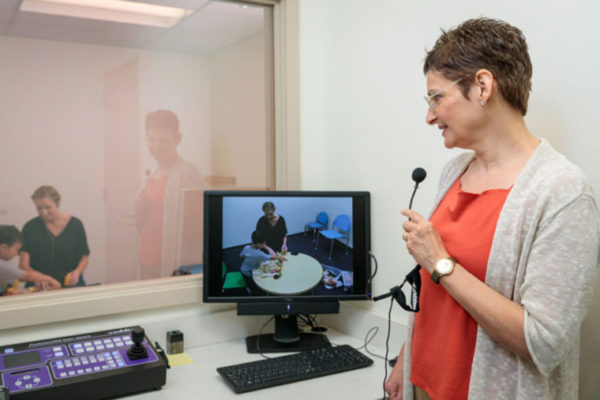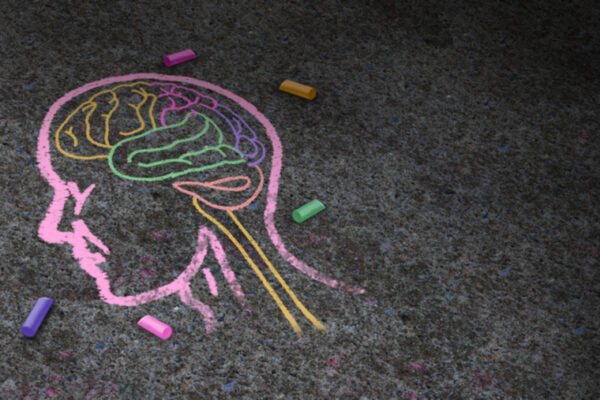Children with specific psychiatric symptoms, such as anxiety, may struggle to understand emotional cues when people around them are happy, sad or angry, and that lack of understanding can make it difficult to respond appropriately in social situations. Studying brain scans from hundreds of children ages 5 to 15, researchers at Washington University School of Medicine in St. Louis have found that how children’s brains process emotional cues typically is mostly set by the time they are school age. And as they reach adolescence, such brain activity becomes similar to the way the brains of their peers process such cues.
The research provides additional evidence that the best time to intervene to address issues children may have in reading others’ emotional cues is early, even before they start school.
The study is published June 8 in the journal Nature Neuroscience.
“It appears that activation patterns in the brain for processing naturalistic emotional cues are pretty well set by the time a child reaches school age,” said M. Catalina Camacho, a postdoctoral researcher in the Department of Psychiatry at Washington University and the study’s first author. “While the patterns become more refined in adolescence, they don’t change substantially. What that means is that when the response to others’ emotions is unusual — as it can be in anxiety, autism or depression — we really need to be intervening during early childhood to better support the child’s social and emotional development.”
Camacho and her colleagues analyzed brain scan data from 823 kids who were shown two videos while in a magnetic resonance imaging scanner. One was a Pixar short entitled “The Present,” in which a young boy who is missing part of one of his legs is given the gift of a puppy who also is missing part of a leg. The other video was a 10-minute scene from the animated film “Despicable Me,” in which a supervillain begins a family by adopting three orphan girls, and he must choose whether he is more committed to being a villain or to raising his daughters.
“We were surprised by the findings because the brain activity for each emotion was so distinct among these children,” Camacho said. “Overall, the activation patterns seem to be very well set for each emotion category, which tells me we need to study even younger kids to determine when these brain responses begin to take shape.”
Similar studies that identify others’ emotions have been conducted in adults and older children using more static stimuli.
“Adults and older kids know that when they see a picture of a sad face, they’re meant to interpret that the person is sad, but if you show the same picture to a 3-year-old, they often won’t recognize the emotion because there’s no context showing why the person is making a sad expression,” Camacho explained. “With movies, we can bridge that gap because movies present cues with much-needed context about the emotions.”
Perceiving and identifying emotions in others is a complex process that involves nearly every cognitive network in the brain.
“Many psychiatric conditions, such as anxiety and various personality disorders, are associated with difficulty reading others’ emotions, or less empathy,” said senior investigator Deanna M. Barch, the Gregory B. Couch Professor of Psychiatry and chair of the Department of Psychological & Brain Sciences in Arts & Sciences. “We didn’t actually measure empathy, but we were able to see how children’s brains encode emotional cues from others, which is an important component of empathy.”
For this study, the researchers analyzed data from the Healthy Brain Network study, a New York-based imaging study in which the brains of children are scanned to look at how various brain structures and networks develop. Data from the study is publicly available to scientists all over the world.
In follow-up work, Camacho is involved in a pilot study to map how these emotion-specific activation patterns emerge across early childhood in children at high risk for anxiety. She believes that such information can inform relationship and parenting-focused interventions to help parents and children better read one another’s emotional cues as a way to support better emotional development.
“These sorts of interventions might represent one way to help kids develop the ability to read other people’s emotions and respond appropriately,” she said.
Camacho MC, Neilsen AN, Blaser D, Furtado E, Steinberger DC, Fruchtman L, Culver JP, Sylvester CM, Barch DM. Large-scale encoding of emotion concepts becomes increasingly similar between individuals from childhood to adolescence. Nature Neuroscience, June 8, 2023.
The study was funded by the National Science Foundation and the National Institute of Mental Health and the Eunice Kennedy Shriver National Institute of Child Health and Human Development of the National Institutes of Health (NIH). Grant numbers DGE-1745038, HD102156 and MH109589.
About Washington University School of Medicine
WashU Medicine is a global leader in academic medicine, including biomedical research, patient care and educational programs with 2,800 faculty. Its National Institutes of Health (NIH) research funding portfolio is the third largest among U.S. medical schools, has grown 52% in the last six years, and, together with institutional investment, WashU Medicine commits well over $1 billion annually to basic and clinical research innovation and training. Its faculty practice is consistently within the top five in the country, with more than 1,800 faculty physicians practicing at 65 locations and who are also the medical staffs of Barnes-Jewish and St. Louis Children’s hospitals of BJC HealthCare. WashU Medicine has a storied history in MD/PhD training, recently dedicated $100 million to scholarships and curriculum renewal for its medical students, and is home to top-notch training programs in every medical subspecialty as well as physical therapy, occupational therapy, and audiology and communications sciences.



